As has been previously described in the PSP, the friendly has been an important opportunity for the transmission of new football tactics. It’s also a great way for clubs and federations to make some money. From the fan’s perspective, the friendly is often a rare opportunity to see top flight international soccer and also serves as an important community builder, whether those communities are ethnic groups that identify with particular international clubs or the soccer community as a whole.
From 1905 through 1970, Philadelphia was a regular stop when international teams–some of them national teams but most of them club teams—came to tour North America for a series of international friendlies. With the exception of the First World War, the Great Depression and the Second World War, for many years Philadelphia-area soccer fans could see teams as storied as Atlante, Bari, Besiktas, Celtic, Charlton Athletic, Corinthian FC, Dundee, Dunfermline, Eintracht Franfurt, Hakoah All-Stars, Hamburg, Inter Milan, Kaiserslautern, Liverpool, Manchester United, Manchester City, Nacional, Nottingham Forrest, Plymouth Argyle, Sheffield United, Sunderland, and Wolverhampton. Several years featured multiple friendlies sometimes within weeks of one another.
After 1974, Philadelphia would not play host to a friendly involving major international clubs until the first ticketed event at Lincoln Financial Field in, the 2003 match between Manchester United and Barcelona.
Beginning in 1919 and as late as 1964, Philadelphia teams also embarked on international tours of their own. With the exception of the newly formed training and recruiting tour of the Philadelphia Atoms in 1973, this would not be repeated until the Philadelphia Union traveled to Mexico for some warm-up games in the winter of 2010.
The first international friendlies
The international friendly has always been important in the history of football as a marker for the progression of the culture of soccer around the world. The first friendly, between Scotland and England at the West of Scotland Cricket ground in Patrick, Scotland—an area of Glasgow—took place on November 30, 1872. The match was seen by some 4,000 spectators and resulted in a 0–0 draw.
The first friendlies involving US teams were also the first friendlies to take place outside of Britain. In 1885 and 1886, the US and Canada one game each year. Though not recognized by the US Soccer Federation as having been full internationals, the Canadians won the first match 1–0 and the US won the second match 3–2. Both games took place in East Newark, New Jersey at Clark Field, the home grounds of the ONT club, one the great early clubs in the history of US Soccer.
The first international friendlies in Philadelphia
Affordable trans-Atlantic passage combined with a well developed local, regional and national rail system meant that international soccer teams could easily and profitably come to America by the turn of the 20th Century. But the first international friendly in Philadelphia actually took place against the touring Bosanquet’s XI cricket team on Oct. 8, 1901 against a “gentlemen of Philadelphia” team at the Belmont Cricket Club in West Philadelphia. The game would be the impetus for the rebirth of Philadelphia soccer after the hard economic times of the 1890s.
In 1905, the Pilgrims, a club largely made up of gentleman amateur players first came to the US to teach North America how to play football properly. In that first tour, the Pilgrims scored 72 goals while conceding only seven, losing but one game out of twelve played over two months. In Philadelphia they faced a team of University of Pennsylvania students and alumni in front of 3,000 to 4,000 spectators at Franklin Field. The Pilgrims won 10–0. This process of a Philadelphia-picked team, rather than a longstanding club team, being destroyed by a touring team would be regularly repeated.
When the Pilgrims returned in 1909, they played three matches in Philadelphia. As described in an earlier PSP article, though two of the three matches resulted in victories for the Pilgrims, the Hibernian club of Kensington gave the Pilgrims their first loss of the 1909 tour. The Inquirer reported following the 1–0 victory that “there was great rejoicing in Kensington last night over the victory of the Irishmen, and the defeat of the tourists will give a great boost to local football.”
Those Johnny Appleseeds of English football, the Corinthians, first came to the US in 1906. They faced an All-Philadelphia XI on September 3, 1906 and defeated them 12–0 in front of some 7000 spectators. The Inquirer reported that while the home team “made the visitors hustle for their points”, the Philadelphia goalkeeper “was simply useless.” Apparently he wasn’t as clueless as the next Philadelphia keeper who faced the Corinthians. When the club returned to Philadelphia on September 19, 1911, the Corinthians won 19–0.
US National team and Bethlehem Steel FC travel to Scandinavia
There were no international tours to the US after Corinthian FC’s visit in 1911 through the First World War. In 1916, the US was a neutral in the war and the United States Football Association, founded in 1913 and the original name of the United States Soccer Federation, organized a tour to Norway and Sweden. The US side featured several Philadelphia-area based players including C.H. Spaulding of Philadelphia Disston as well as Thomas Murray and Neil Clarke of Bethlehem Steel FC.
The tour opened with a 1–1 draw against a Stockholm all-star team. Their next match was the first officially recognized US international, played in front of 21,000 against a side picked by the Sweden Football Association. It was a tight match played in rainy conditions but the US won 3–2. The US would end the tour with a 3–1–2 record. When they beat a team of all-stars from Gothenburg 2–1, several US players were attacked by local fans during a pitch invasion after the final whistle.
Bethlehem Steel FC, arguably the greatest soccer team in the US for much of the 1910s and 1920s, traveled to Scandinavia in 1919 with a squad that included six guest players from other clubs, including the legendary Archie Stark. In the twenty year history of the club, Bethlehem Steel won nine league championships, six National Challenge Cups (the forerunner to the present US Open Cup) and six American Cups. The team played 14 games in Sweden and Denmark between August and September 1919, and returned home with a record of seven wins, two losses and five draws. A tour to Scandinavia apparently was profitable enough for a handpicked St. Louis team to make the trip in 1920. Albert Blakey, who had been on the 1916 US team and the 1919 Bethlehem team, played for the St. Louis side as a guest.
Friendlies in Philadelphia before the Second World War
The formation of the American Soccer League (ASL) produced what has been called the Golden Age of US Soccer in the 1920s, with professional soccer drawing crowds in the tens of thousands and soccer being second only to baseball as the most popular professional team sport in the US. With a well organized and popular league covering much of the northeast of the US, the opportunities for international clubs to make money in the off season in front of large crowds were great. US clubs wouldn’t do so bad themselves.
The first international club team to make the trip to the US after the First World War was an All-Scotland team sponsored by the Third Lanark club of Glasgow in 1921. They played two matches against Philadelphia-area opposition, defeating Bethlehem Steel 8–1 on July 13 and the Philadelphia Field Club three days later 3–1.
In 1924, Corinthian FC returned to the US to play a five game tour in the first two weeks of September. Four of the five matches took place in Philadelphia. Corinthian defeated the Philadelphia Freebooters 8–1 in the first match on Sept. 1. Four days later, Philadelphia SC secured a 1–1 draw. A team made up of players from the Philadelphia Cricket Club League lost 7–1 three days later. The last match of the tour was against Haverford College, who lost 3–0. Brooklyn Wanderers managed a 1–1 draw in between.
In 1926, the Hakoah All-Stars—the all-Jewish team from Vienna—came to the US. Their match against against the New York Stars was attended by some 46,000 spectators, a record that would stand until the heady days of the New York Cosmos more than 40 years later. The last match of the tour was against the Philadelphia Field Club and was won by the visitors 3–0.
1927 would include the return of Hakoah All Stars as well as visits by Maccabi FC of Tel Aviv and Nacional of Uruguay. Hakoah opened its tour against Bethlehem and Philadelphia Stars, losing both matches by the score of 9–0 and 2–1 respectively. Hakoah got its revenge against Philadelphia Stars later in the tour when the beat them 7–1.
(Throughout the rest of this article, references will be made to “Philadelphia Stars.” This was not some forgotten, longstanding team but simply what the picked Philadelphia team that played the touring team was called. The squad was likely made up of a cross section of popular Philadelphia teams. While a selection of all-stars may have helped increase ticket sales, the team was unlikely to have much time to prepare for a match.)
Maccabi played a combined New York Giants/Bethlehem side in New York City early in their tour which resulted in a 1–1 draw. Later in Philadelphia they defeated the Philadelphia Stars 7–1. Nacional defeated Philadelphia 4–1.
An Italian all-star team made up of players from Bologna, Brescia, Genoa, Leghorn, Milan, Padoga, Rome and Turin toured the US in 1928. The Palestra Italia FC team defeated the Philadelphia Stars 8–3 the second game of the tour.
The first US tour by Celtic happened in 1931. Despite taking place in the depths of the Great Depression and the American Soccer Wars, the tour was a huge success with crowds at some venues being as large as 30,000. Quoting David Potter, the author of Willie Maley: The Man Who Made Celtic, David Wangerin writes that this was in some part due to the presence of so many Irish and Scottish exiles in the US, people who had been forced to flee their home countries after the 1916 Easter Rising in Dublin and the “Red Clydeside” labor disturbances at the end of the First World War and in the years immediately following: “To them, the visit of Celtic meant absolutely everything.”
After landing a day late due to poor weather at sea, the tour kicked off in Philadelphia on May 23 against a team comprised of Eastern Pennsylvania amateurs, an “East Penn and District 1” XI. Some 12,000 crowded into Frankford Stadium, home of the Frankford Yellow Jackets of the National Football League. Celtic won 6–1. Said Celtic captain Jimmy McStay after the match, “we did not feel that we had to extend ourselves to the full.”
Audax SC of Chile came to the US in 1933. They defeated the Philadelphia Americans 8–3 on Oct. 21.
In 1935 the Scotland national team kicked off its North American tour in Philadelphia with a 3–0 victory over the Philadelphia German American team. The following year Maccabi returned to the US and played Philadelphia Passon twice over the course of the tour. Maccabi won the first match on Oct. 4, 1–0, but Passon won the return match on Nov. 5, 2–0.
Charlton Athletic became the first professional team from England to play in Philadelphia when they toured the US in 1937. Predictably, they beat the East Penn Stars 7–0 when they came to town on June 26. Aside from a brief tour by a rather weak Scottish national team (that actually included a Welshman and an Englishman on the roster) in 1939 which did not make a stop in Philadelphia, this would be the last tour by a European club in the United States until after Second World War.
Clubs from the Caribbean and Central America did tour the US during the early in the war. Just three months before the US entered the war in December of 1941, the Puentes Grandes club from Cuba toured the US, playing two matches against Philadelphia teams. On Sept. 3, the match against the Philadelphia Nationals ended in a 2–2 draw. On Sept. 15, the Philadelphia Americans lost 4–2. In 1942 the Mexican club Atlante FC lost to the Philadelphia Stars 3–2. It would be the last international friendly in Philadelphia until 1946.
Friendlies in Philadelphia following the Second World War: 1946-1960
The first international club team to travel the US after the Second World War was Liverpool FC, who toured the US from May 11 until June 12 of 1946. They played ten matches and won every one of them. Philadelphia enjoyed the distinction of suffering the biggest loss of the tour when they conceded 12 goals while scoring none on May 12. Liverpool would go on to win the 1946-47 League One title in England. In September, Puentes Grandes returned to the US where they beat Philadelphia Stars 1–0 on the last match of their tour.
In 1947, Hapoel FC of Tel Aviv toured the US and defeated Philadelphia Stars 1–0. The tour is noteworthy for being both the first coast-to-coast tour of the US by an international club and for featuring the first televised matches in US soccer history. Both the first match against New York Stars at Yankee Stadium and the last match against the American League Stars at Ebbets Field were televised. Hapoel won the first match 2–0 and lost the second by the same score.
1949 saw three international teams come through Philadelphia: Belfast Celtic, Inter Milan and the Scotland national team. On May 25, Belfast Celtic defeated the Philadelphia All-Stars 4–2. They then faced the Philadelphia Nationals on May 30. The Nationals would win the mini double—the ASL championship and the Lewis Cup (the league cup)–in 1949 and played the visitors to a 3–3 draw. The Philadelphia Stars would lose 4–2 to Inter on the last day of their tour and were walloped 8–1 by Scotland.
Manchester United came to the US for the first time in 1950. While they did not play in Philadelphia, a combined Kearny, New Jersey-Philadelphia all-star team played them at Randall’s Island on May 21. Four members of the Philadelphia Nationals and future Hall of Famers were on the Kearny-Philadelphia squad: Jack McIlvenny, Walter Bahr, Benny McLaughlin and Nick Kropfelder. After going down 1–0 to United on a goal from Jack Rowley, Paul Campbell equalized and Art Scheppel put the Kearney-Philadelphia team ahead. The Kearney-Philadelphia team was able to hold off United’s furious attack until John Aston equalized in the 89th minute. McIlvenny and Bahr would be part of the US team that defeated England in the 1950 World Cup little more than a month later. After the World Cup, McIlvenny left the Philadelphia Nationals to play for Manchester United.
Playing in Philadelphia in 1950 were Hamburg and Besiktas, the first German and Turkish teams to tour the US. Hamburg defeated Philadelphia All-Stars 5–0 on May 21, the same day as the Manchester United match in New York. Besiktas defeated Philadelphia Stars 7–1 on June 6.
In 1951 Celtic returned to the US, and to Philadelphia, where they defeated Philadelphia Stars 6–2 on June 3. Walter Bahr, Tom Oliver and Len Owen of the Philadelphia Nationals and John Hughes and Bob Gormley of the Philadelphia Americans were part of the American League Stars team that traveled to Israel in October of 1951 for three matches. Their sole win came against a combined Hapoel-Haifa team on Oct. 22 with a final score of 2–1.
1952 saw the return of Manchester United and the second visit by a German team, the Stuttgart Kickers. Philadelphia soccer fans could have seen two international friendlies in a week when Manchester United came to town on May 11 and Stuttgart visited on May the 18 as long as they didn’t mind seeing the Philadelphia Stars defeated by the combined score of 14–2.
An American League Stars team traveled to Guatemala in 1953 to participate in a three team tournament that included Palermo and Comunicaciones of Guatemala City. On the squad from Philadelphia were David Dick and Jack Huffin of the Philadelphia Nationals as well as Ed Emberger and Robert Gormley of the Philadelphia Americans. The American League Stars beat Comunicaciones 6–2 but lost twice to Palermo.
England’s Plymouth Argyle came to Philadelphia in 1954 as part of a tour and beat Philadelphia All-Stars 3–2. When Nuernberg and Sunderland visited in 1955, Nuernberg defeated Philadelphia All-Stars 8–5 and Sunderland defeated Uhrik Truckers 3–1. On the Nuernberg squad was Max Morlock, a member of the West German team that won the 1954 World Cup. Both the Germantown Cricket Club team and Uhrik Truckers traveled to Bermuda in 1954. Neither team won a match in their three game series and each finished with one draw and two losses. When Schwaben Augsberg came to Philadelphia as part of their 1956 tour, they beat Uhrik Truckers 4–0.
Another German team, Kaiserslautern, came to Philadelphia in 1957 where they defeated Phoenix Stars 10–1 in front of 9000 spectators on May 19. Hapoel returned also. Uhrik Truckers beat them 3–2 in front of 5000 on May 18, the day before the Kaiserslautern friendly.
Manchester City kicked off their first US tour against a Uhrik Truckers/Ukrainian select team on May 18, 1958. The visitors won 6–1. West German side Kickers Offenbach had played Philadelphia Stars seven days before. While the the result for that match (and an Offenbach match against Hartford) is not available, the recorded results of the other Offenbach’s matches on their tour show them winning against all opposition by a combined score of 17–3. It’s probably safe to assume that Philadelphia did not prevail.
Helsingborgs of Sweden visited Philadelphia as part of their 1959 tour. They faced Uhrik Truckers and defeated them 4–2.
Friendlies in Philadelphia: 1960–1970
The Ukrainian Nationals would play host to three international clubs in 1960, two club sides and one national team side. On February 13 they managed a respectable 2–2 draw with Austria. On May 21 they lost a close match with Third Lanark FC of Scotland 2–1. Facing Manchester United on June 12, the last day of United’s tour, the Nationals lost 10–0.
The Ukrainian Nationals again lost to Third Lanark 2–1 when the Scottish side returned in May of 1961. On June 4 the Philadelphia Ukrainians held Stuttgart Kickers to one goal in their loss, a dramatic improvement over the Philadelphia Stars 10–2 loss nine years earlier. More lopsided results would soon follow, however, when Baden Amateurs All-Stars came to town on June 18, 1961. They defeated Philadelphia Stars 12–1.
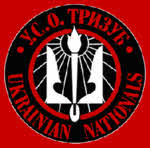 1962 saw three German sides and an English team come through Philadelphia. The Ukrainian Nationals lost 5–0 to the North German All-Star team and a combined “Ukes and United League” team lost 2–1 to Saarbruecken. Nuernberg defeated a Philadelphia United League select team 5–2. The Ukrainian Nationals were hosts to Sheffield United for the first match of their 1962 US tour and lost 4–1.
1962 saw three German sides and an English team come through Philadelphia. The Ukrainian Nationals lost 5–0 to the North German All-Star team and a combined “Ukes and United League” team lost 2–1 to Saarbruecken. Nuernberg defeated a Philadelphia United League select team 5–2. The Ukrainian Nationals were hosts to Sheffield United for the first match of their 1962 US tour and lost 4–1.
In 1963, the Ukrainian Nationals fought a close match with Wolverhampton Wanderers but lost 3–2. 1963 was also the first year that Philadelphia saw its first friendly between two international clubs when the West German sides Platting Sc and Karlsruher FV met on June 16. Platting won 2–1.
In 1964, two Philadelphia teams traveled abroad. The German Hungarians played nine matches in Germany where they recorded a record of one win, one draw and seven losses. The Ukrainian Nationals played four matches in Bermuda, winning all four. Lighthouse Boys Club faced the Irish Republic Juniors in Philadelphia, losing 6–1.
In 1965, the Ukrainian Nationals narrowly lost to Nottingham Forrest in Philadelphia by the score of 3–2. In 1967 they lost to Dundee 1–0. A match between Bavarian All-Stars and Philadelphia All-Stars was a wild 7–7 affair and Philadelphia German Hungarians had a close 1–0 loss to Heinbronn of West Germany while Philadelphia All-Stars lost 2–0. But, the scoring gap opened again when Dunfermline of Scotland beat the Ukrainian Nationals 7–1 in 1968.
1970 saw Italian side Bari beat Eintracht Frankfurt 1–0. The Philadelphia German Hungarians drew 3–3 with West German team 03 Lunenberg. The German Hungarians were unlucky against Karlsruher FV, losing 2-1.
Friendlies in Philadelphia: 1971 to the present
 The rise of the North American Soccer League in the 1970s meant that international clubs were focused on playing NASL teams. Though the NASL’s first season was in 1968, Philadelphia didn’t get an NASL team until the Philadelphia Atoms were established in 1973.
The rise of the North American Soccer League in the 1970s meant that international clubs were focused on playing NASL teams. Though the NASL’s first season was in 1968, Philadelphia didn’t get an NASL team until the Philadelphia Atoms were established in 1973.
The Atoms trained in England before the start of their first season and picked up several players there including three from Southport FC. They had a remarkable first season which included winning the NASL championship. Along the way they enjoyed a 1–0 victory over Mexico side Vera Cruz on June 24, 1973. This match wasn’t really a friendly because the NASL included the results in the league standings. The Atoms did play Ireland’s Finn Harps in a friendly in 1973, beating them 4–0 in front of some 10,000.
In 1974, the Atoms faced Universidade Honduras, beating them 7–0. They also played the Italian National Army team to a 2–2 draw. Perhaps the biggest friendly of 1974 featured the Atoms against the Soviet Red Army team, which the Atoms lost 6–3. The match, referred to as “the Big Bang of Indoor Soccer,” was a major impetus in the establishment of indoor soccer in the US. But by now, the Atoms fortunes were in decline and the team was disbanded after 1976. The Philadelphia Fury came to town in 1978 but they were gone to Montreal in 1981. (If anyone knows if the Fury hosted any friendlies, please let me know.)
Without a stable professional team, Philadelphia no longer was a destination for international clubs on tour. The same was true for much of the rest of the US, unless you were home to an NASL powerhouse like the New York Cosmos or the Tampa Bay Rowdies. Some top NASL teams embarked on tours of their own. Beginning in 1975, for example, the Cosmos began a succession of very successful international tours.
But with the demise of the NASL, even fewer friendly tours would occur. It wasn’t really until the inaugural season of the MLS that international clubs like Fiorentina, Feynoord, and Sporting Lisbon began to return to the US for friendlies with clubs in the new league. The 13 friendlies played between MLS teams in 1996 became 32 in 1997, dipped in 1998 and 1999, and began to pick up again in 2000. By 2001 a few MLS teams were beginning to travel abroad for tours of their own.
From the last friendly hosted by the Atoms in 1974, it would take 29 years for Philadelphia to reappear on the international soccer friendly map. When it did reappear it did so with a bang.
Lincoln Financial Field’s first ticketed event was a match between Manchester United and Barcelona on August 3, 2003. Some 68, 396 people attended the match, the last of the Championsworld Series which also featured Celtic, Boca Juniors, Juventus, Club America. Manchester United won 3–1.
In 2004, more than 55,000 came out to see Celtic beat United 2–1 in a series of matches that included Chelsea, Bayern Munich, Liverpool, Roma, Porto, AC Milan and Galatasaray. Some 39,000 also watched AC Milan defeat Chelsea 3–2 that year.
Philadelphia would have to wait six years for its next international friendlies. On May 29, 2010, the US team defeated Turkey at Lincoln Financial Field in its last home match before leaving for the 2010 World Cup in front of more than 55,000 at Lincoln Financial Field. On July 14, the Philadelphia Union defeated Celtic 1–0 at PPL Park after a stormy day threatened the cancellation of the match, becoming the first Philadelphia team to do so in three attempts. On Wednesday, July 21, the Philadelphia Union will host Manchester United at Lincoln Financial Field. Tickets are still available if you haven’t already gotten yours.
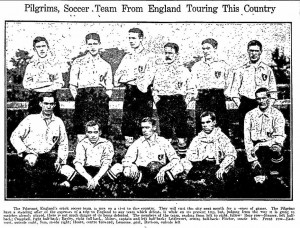
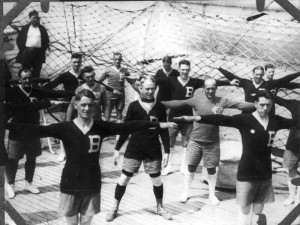
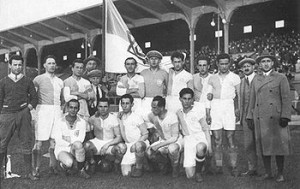
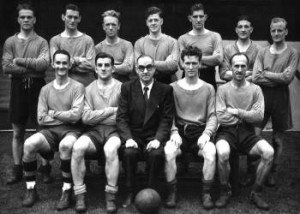
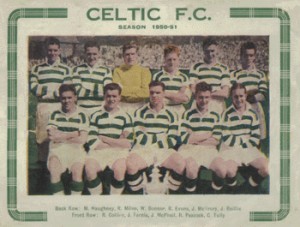

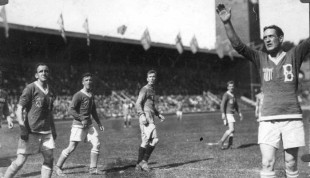

Great post, but I think you’re missing two games from the late 1980s/early 1990s. Admittedly these were hyrbid friendlies, but they were very well attended especially given the state (or lack thereof) of professional soccer in the US at that time.
In August 1989, the US Men’s National Team played Dnepr (FC Dnipro Dnipropetrovsk) of the former Soviet Top League at Franklin Field, winning 1-0. Over 43,000 fans were in attendance.
In August 1991, the US Men’s National Team played Sheffield Wednesday at Veterans Stadium, winning 2-0. Over 44,000 fans were in attendance.
I went to both games with my family, and even still have some photos.
Thank you very much for the info Jon – I was hoping someone could fill in some of the blanks – 29 years does seem like a very long time. Hopefully other readers have memories of other matches I may have not included.
If you could send jpgs of the your photos, I’d love to include them in the article. Of course, I also just want to see them for myself!
efarnsworth@phillysoccerpage.com
info@phillysoccerpage.com
Thanks again!
The two photos of the Bethlehem Steel soccer club were taken from my website. I scanned them from prints owned by Larry Sheridan, the son of Billy Sheridan, the manager of the Bethlehem Steel team.
Thanks for the post – my Dad, Andy Gallagher, played for the Phila. German Americans, then Phila. Americans in the ASL from late 30’s to early 50’s and would have participated in many of these friendlies.
Dave — My Uncle Stanley Morrison played with your father. I am in the process of pulling together newspaper clippings from all the ASL games Stanley played in. Earlier today I was reading about your Dad.
Would love to have access to those articles. I may be contacted at dgallagher@reliabilitydirect.com.
I remember going to the Bicentennial Cup which was held at JFK stadium on Memorial Day of 1976. Team America (NASL all-stars–featuring many non-Americans) played the England national team which had nothing better to do since it failed to qualify for the European Cup. I remember being bummed that George Best had pulled out of playing for the NASL team. Pele, Chinaglia, and Bobby Moore were on Team America, but England spanked them anyway.
Great site, by the way.
06.07.1959 Philadelphia
All Stars – Legia Warsaw 0-7
Scores – Legia : Brychczy 4, Strzykalski, Ciupa, Nowara
Legia’s record in 1959 on Tour in USA W5 D2 L1
Thank you for the info!
In 1989 the united league Allstars hosted Kharlsrue from Germany at UGH. Blair Thompson was the coach and I was the captain for our team. By the way a rookie goal keeper for Kharlsrue played in that game and his name was Oliver Khan.